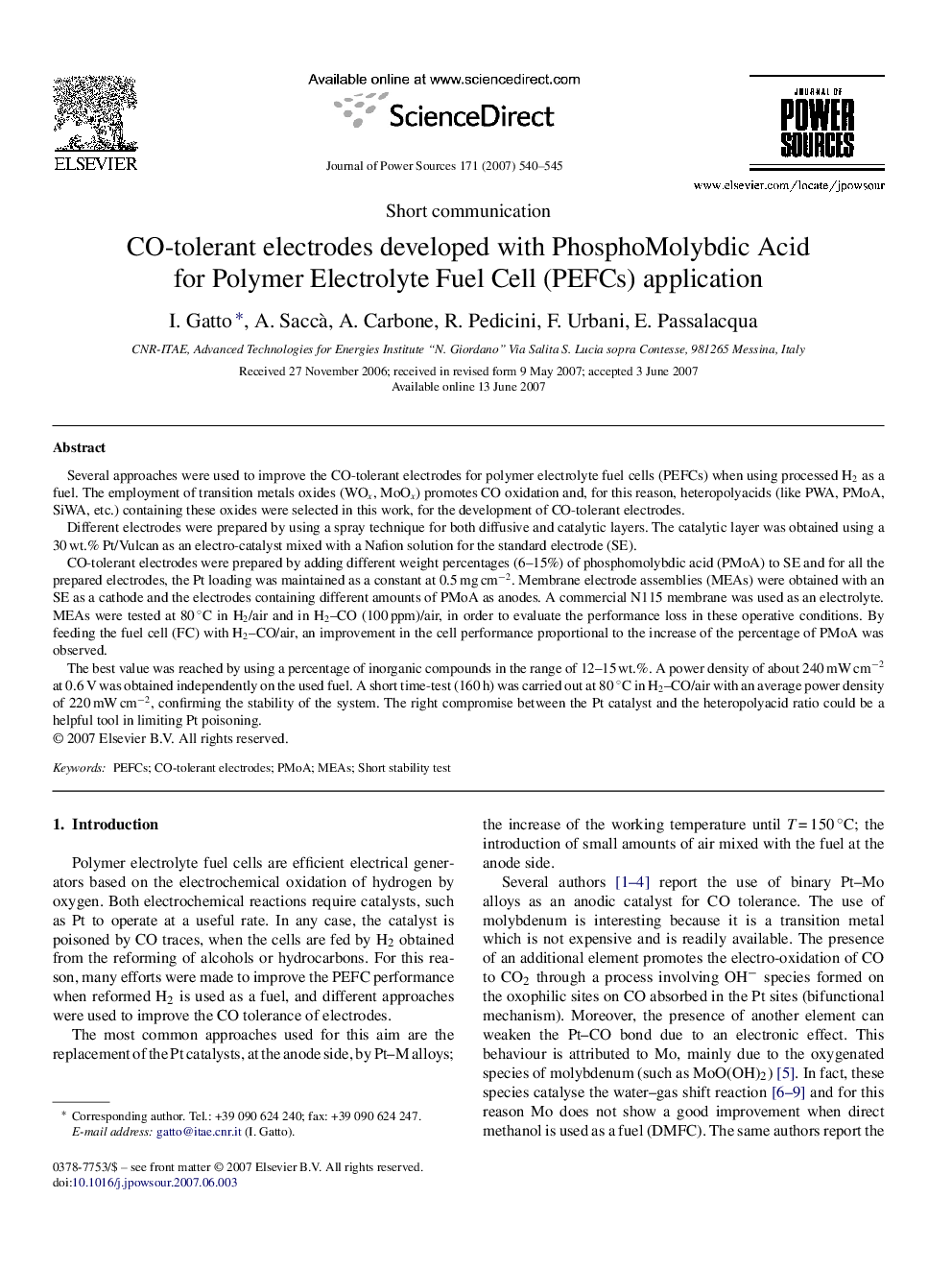| Article ID | Journal | Published Year | Pages | File Type |
|---|---|---|---|---|
| 1286366 | Journal of Power Sources | 2007 | 6 Pages |
Several approaches were used to improve the CO-tolerant electrodes for polymer electrolyte fuel cells (PEFCs) when using processed H2 as a fuel. The employment of transition metals oxides (WOx, MoOx) promotes CO oxidation and, for this reason, heteropolyacids (like PWA, PMoA, SiWA, etc.) containing these oxides were selected in this work, for the development of CO-tolerant electrodes.Different electrodes were prepared by using a spray technique for both diffusive and catalytic layers. The catalytic layer was obtained using a 30 wt.% Pt/Vulcan as an electro-catalyst mixed with a Nafion solution for the standard electrode (SE).CO-tolerant electrodes were prepared by adding different weight percentages (6–15%) of phosphomolybdic acid (PMoA) to SE and for all the prepared electrodes, the Pt loading was maintained as a constant at 0.5 mg cm−2. Membrane electrode assemblies (MEAs) were obtained with an SE as a cathode and the electrodes containing different amounts of PMoA as anodes. A commercial N115 membrane was used as an electrolyte. MEAs were tested at 80 °C in H2/air and in H2–CO (100 ppm)/air, in order to evaluate the performance loss in these operative conditions. By feeding the fuel cell (FC) with H2–CO/air, an improvement in the cell performance proportional to the increase of the percentage of PMoA was observed.The best value was reached by using a percentage of inorganic compounds in the range of 12–15 wt.%. A power density of about 240 mW cm−2 at 0.6 V was obtained independently on the used fuel. A short time-test (160 h) was carried out at 80 °C in H2–CO/air with an average power density of 220 mW cm−2, confirming the stability of the system. The right compromise between the Pt catalyst and the heteropolyacid ratio could be a helpful tool in limiting Pt poisoning.
